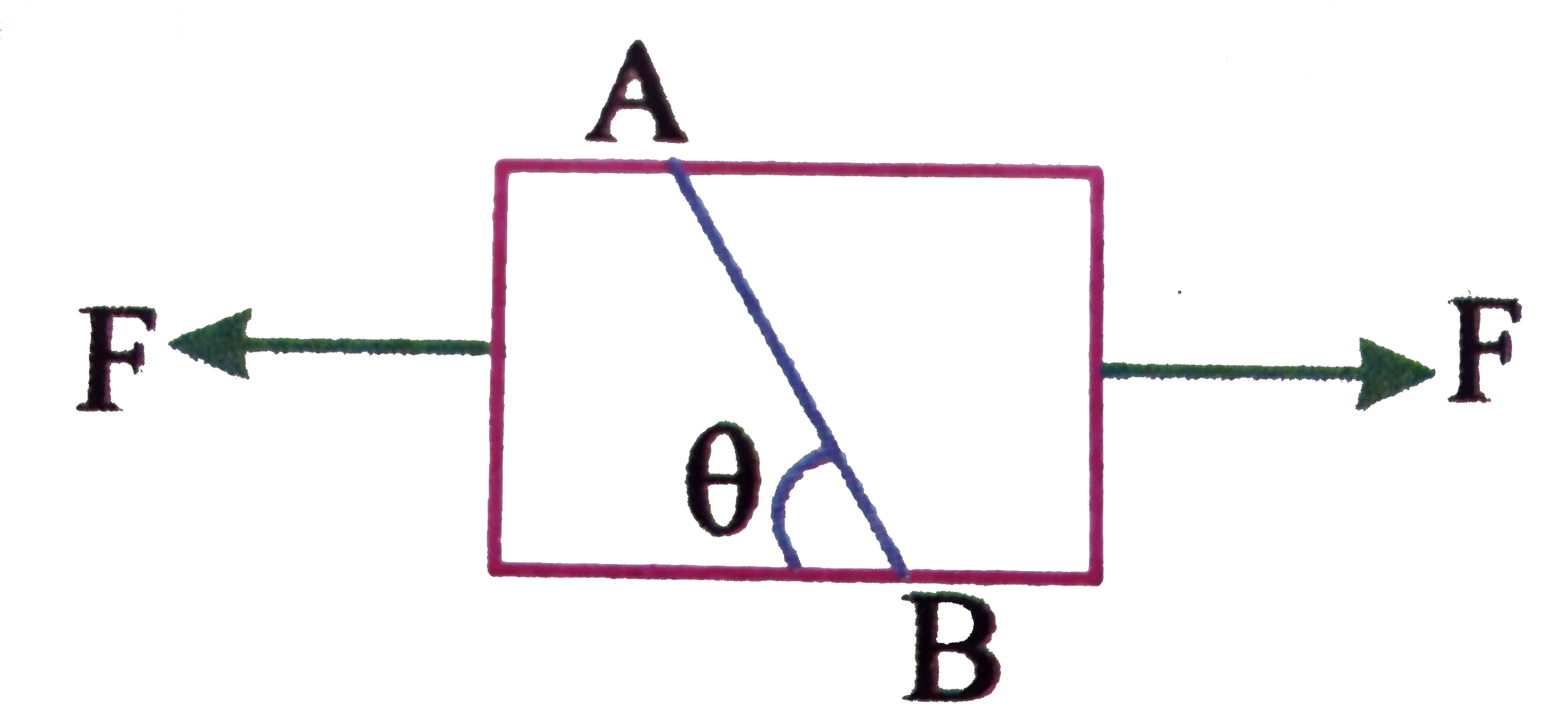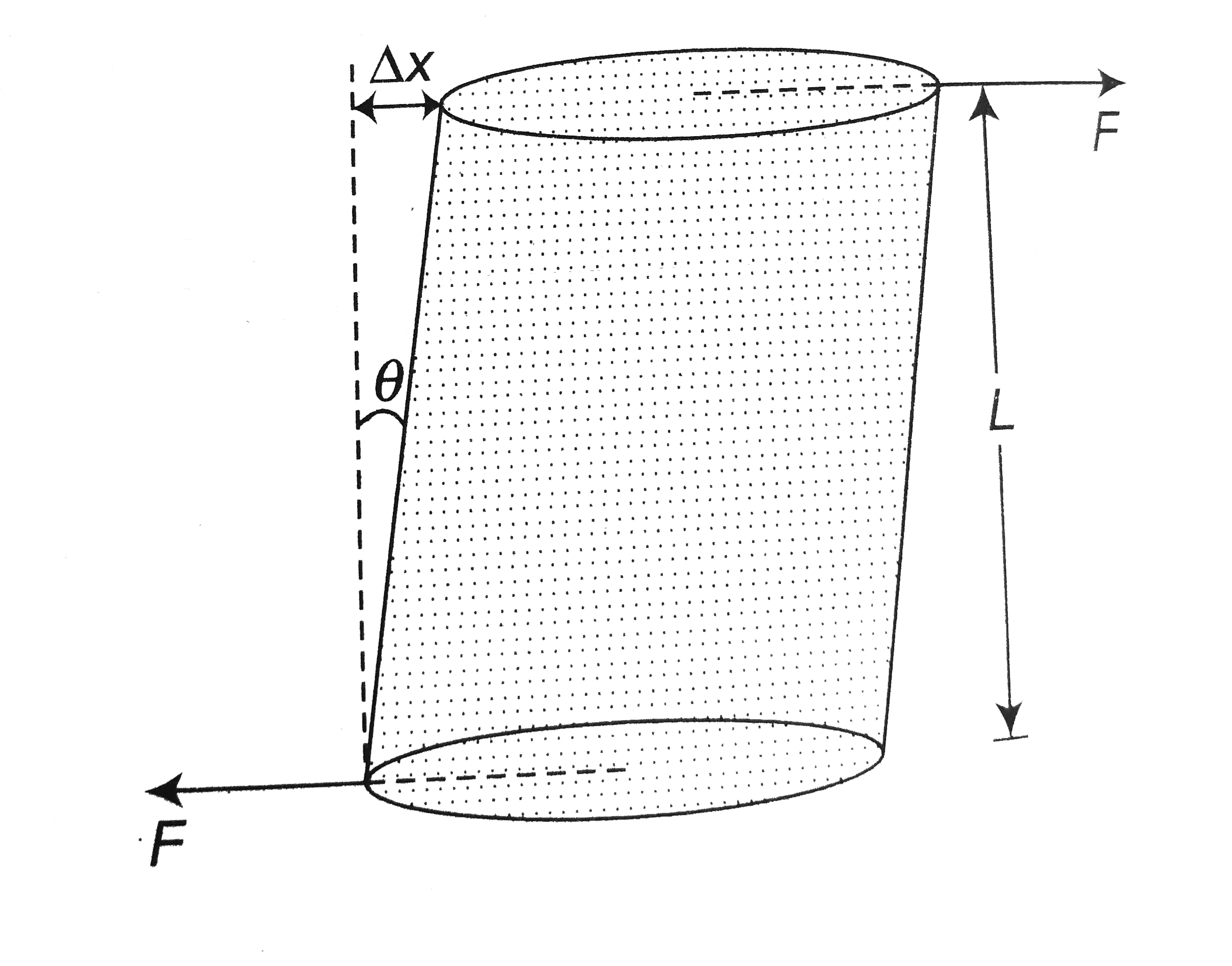Two equal opposite forces each of magnitude F is applied along a rod of transverse sectional are A . The normal stress to a section PQ inclined θ to transverse section is -
Step by step video & image solution for Two equal opposite forces each of magnitude F is applied along a rod of transverse sectional are A . The normal stress to a section PQ inclined theta to transverse section is - by Physics experts to help you in doubts & scoring excellent marks in Class 12 exams.
Updated on:21/07/2023Similar Questions
A force F is applied along a rod of transverse Sectional area A. The normal stress to a section PO inclined to transverse section is

View SolutionTwo equal and opposite forces F and −F act on a rod of unifrom cross-sectional ara A, as shown in the figure. Find the (i) shearing (ii) longitual stress on the section AB.

View Solution
Knowledge Check
Two equal and opposite point forces applied at mid- points of the ends of a rod of square cross shown. Consider the dotted section ABCD. If the rod is cut across this Gloss section, the force exerted by the right part of the rod on left part across this cross section is
 Aacting at point passing through cross section acting at point passing through cross section ABCDBacting at a point but not passing through the centre of cross section ABCDCuniformly distributed across the cross section ABCDDnon-uniformly distributed across the cross section ABCD
Aacting at point passing through cross section acting at point passing through cross section ABCDBacting at a point but not passing through the centre of cross section ABCDCuniformly distributed across the cross section ABCDDnon-uniformly distributed across the cross section ABCDIn the figure shown, forces of equal magnitude are applied to the two ends of a uniform rod. Consider A as the cross-sectional area of the rod. For this situation, mark out the incorrect statements.
 AThe rod is in compressive stress.BThe numerical value of stress developed in the rod is equal to F/A.CThe stress is defined as internal force developed at any cross section per unit area.Dnone of these
AThe rod is in compressive stress.BThe numerical value of stress developed in the rod is equal to F/A.CThe stress is defined as internal force developed at any cross section per unit area.Dnone of these
If two equal and opposite defirming forces are applied parallel to the cross sectional area of the cylinder as shown in the figure, there is a relative displacement between the oppsite faces of the cylinder. The ratio of Ax to L is known asAlongitudinal strainBvolumetric strainCshearing strainDPoisson's ratio
A bar of cross-section A is subjected to equal and opposite tensile forces at its ends. Consider a plane section of the bar whose normal makes an angle θ with the axis of the bar .
(i) What is the tensile stress on this plane?
(ii) What is the shearing stress on this plane?
(iii) For what value of θ is the tensile stress maximum
(iv) For what value of θ is the shearing stress maximum?

View SolutionA bar of cross section A is subjected to equal and opposite tensile force at its ends. Consider a plane section of the bar whose normal makes an angle θ with the axis of the bar.

a. What is the tensile stress on the plane?
b. What is the shearing stress on the this plane?
c. For what value of θ is the tensile stress maximum?
d. For what value of θ is the shearing stress maximum?
View SolutionTwo equal forces (P each) act at a point inclined to each other at an angle of 120∘. The magnitude of their resultant is
View SolutionTwo equal forces (P each) act at a point inclined to each other at an angle of 120∘. The magnitude of their resultant is
View SolutionTwo forces F1 and F2 are applied at the ends of a metal rod of Yougn's Modulus Y, length l as shown.

Longitudinal stress at the given cross-section PQ if the cross-section of the rod is A0 and tension is T
View Solution